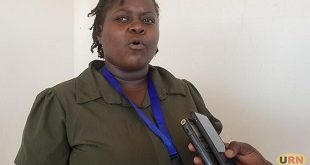
Ntoroko, Uganda | THE INDEPENDENT | Pastoralists in Ntoroko have tasked the government to fulfill its pledge to construct for them valley dams to address the water crisis in the district. Ntoroko, a predominantly cattle-keeping district often experiences prolonged drought.
The most affected people are cattle keepers whose basic source of livelihood is livestock. Hundreds of heads of cattle are lost in the district as pasture and water become increasingly scarce.
Two years ago, the government promised to construct concrete underground tanks, which would store water during the wet season and provide adequate supplies to the pastoralists during the dry spell. However, nothing has been done since then.
This has forced the pastoralists to travel long distances to areas inside the Democratic Republic of Congo-DRC in search of water for their animals or feed their animals from dirty water sources.
Asiimwe Kabagambe, a cattle keeper says that the tanks would be the long-term solution to the devastating effects of seasonal drought. He says that currently, the common source of water for the livestock is simple wells that dry out during the dry seasons. He says that livestock walk for more than 25km in search of water, which is also insufficient.
He says that the continued movement of cattle in search of water and pasture could lead to an outbreak of foot and mouth disease.
Simon Kisembo, a senior six student says that since the animals are the source of income, he may fail to get schools fees because the cows are emaciated and can’t be sold.
William Kasoro, the LCV chairperson Ntoroko says that the government should provide water construction equipment such as excavators and bulldozers to help individual farmers to construct their own valley dams.
According to Kasoro, several reminders to the government have fallen on deaf ears.
Patrick Businge, the production officer Ntoroko district says lack of water and pasture for animals in Ntoroko has affected milk production.
He says during the wet season, the district produces 10,000 liters of milk, however during the dry season, they can hardly produce 1,000 liters of milk as a district. He says currently they are collecting water from Kabarole district, which is about 40 kilometers, to feed their cattle.
*****
URN
 The Independent Uganda: You get the Truth we Pay the Price
The Independent Uganda: You get the Truth we Pay the Price



